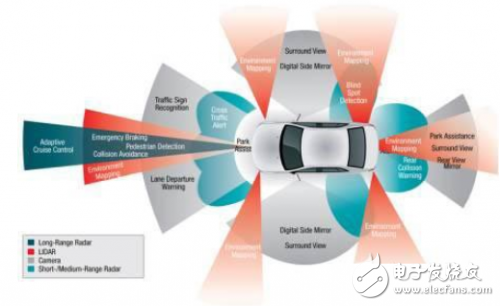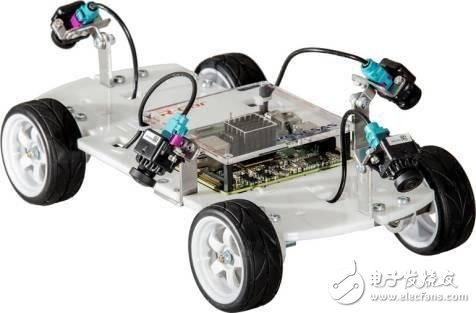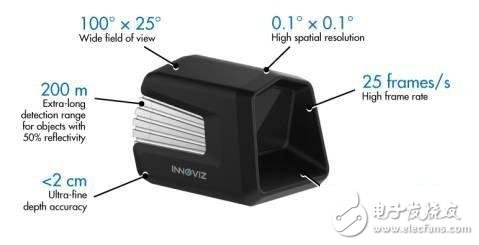A range of new technologies have emerged in automotive applications, including improvements in power systems, very complex telematics, and autonomous driving. Today's cars have more electronics. However, as features such as Advanced Driver Assistance Systems (ADAS) become standard, rather than expensive options, more advanced functional modules will enter the homes of ordinary people. Some changes are being quietly implemented by improving sensors, processors and memory, software, and even human-machine interfaces that require real-time integration (see Figure 1). Here are some of the latest technologies and how their relationship with other technologies makes them even more important in automotive applications. Figure 1. Multiple overlapping sensors are needed to provide the system with context-aware information to implement secure ADAS support Automotive applications benefit from cameras that can stream 4K video. Together with machine learning (ML) software in artificial intelligence (AI), high-definition cameras are being used for obstacle and object recognition in advanced ADAS applications. Here, higher resolution is critical and it is also useful for backup cameras. Multiple camera combinations can be used to provide a bird's eye view of Renesas Electronics around the car. For example, the R-Car Development Kit combines video streams from four cameras into a 360-degree view (see Figure 2). This is very useful when parking or navigating in a narrow place. More advanced ADAS systems highlight areas of conflict that may be encountered. Figure 2. Renesas' R-Car SoC is capable of producing a 360-degree aerial view around the vehicle by weaving video streams from four cameras together. Recently, there have been significant improvements in two range sensors, LiDAR and phased array radar. These are not new technologies, but significant advances in miniaturization and cost reduction will affect the timing and location of these systems. For example, Innoviz (see Figure 3), LeddarTech, Quanergy, and Velodyne are companies that offer 3D solid-state LiDAR systems. These systems are suitable for use in fields such as robots, which are getting smaller and smaller and will have multiple units hidden around the car. Figure 3. Innoviz is just one of many vendors offering 3D LiDAR technology. InnovizOne has a depth of 200 meters and a range of better than 2 cm. It maintains a field of view of 100 degrees to 25 degrees and a spatial resolution of 0.1 to 0.1 degrees. The device delivers 25 frames per second at 3D resolution of over 6 Mpixels/s. Phased array radar overcomes many of the limitations of LiDAR, allowing it to operate in rain and snow, otherwise it may mislead the optical system. Radar can be used to compensate for LiDAR and image systems. Some companies are working hard to provide technology in this area. For example, Texas Instruments' single-chip millimeter-wave sensor mmWave handles 76-81 GHz sensor arrays for sensors and ADAS applications. All of these technologies are used in many areas, from manufacturing to security, and even 3D scanning and printing.
AC Contactor switch mainly used for making or breaking circuit at a long distance, suitable for controlling starting\stopping\reversing of AC motor. AC Contactor of korlen conforms to the requirement of IEC60947-4-1& GB14048.4 standards.
Except AC Contactor, there are many different types of low voltage electric appliances, such as Thermal Relay,Manual Motor Startor ,led light, Circuit Breaker, etc.
AC Contactor,Magnetic Contactor,Wafer Style Valve Wenzhou Korlen Electric Appliances Co., Ltd. , https://www.korlen-electric.com


December 27, 2022